Wise travellers to Scotland know that the southern reaches of the nation – too often overlooked by tourists – contain landscapes of rare and subtle beauty. For centuries this scenery has inspired writers to great lyrical heights, so it's not surprising that the region has nurtured such a rich literary heritage.
Dumfries and Galloway, in the deep south-west, is where you'll find the adopted home of Scotland's most beloved poet, the birthplace of one of the most famous creations of children's literature, and a worthy rival to Hay-on-Wye as Britain's premier book town. Likewise, the Scottish Borders, in the far south-east, has its own noble traditions when it comes to wordsmithery, and proudly celebrates its connections with the nation's most admired novelist.
So, if you're up for some classic writing that has stood the test of time, and some cracking literary festivals, the South of Scotland is the only place to be this year.
From the former home of Robert Burns, to beautiful landscaped gardens and mighty forests, here is our travel guide to the best literary-inspired places to visit in the South of Scotland.
Best literary locations to visit in the South of Scotland
Dumfries and Galloway
Gateway to the lush rolling countryside of the Machars peninsula in Dumfries and Galloway, Wigtown has been officially recognised as Scotland's National Book Town since 1999. The ancient settlement beside the River Bladnoch is a treasure trove of more than a dozen bookshops, with over half a million new and preloved volumes to browse. You'll find Scotland's largest secondhand bookshop here as well as smaller stores serving niche interests, so whether you're looking for a book about aardvarks or a guide to zumba, you're almost bound to find it here.
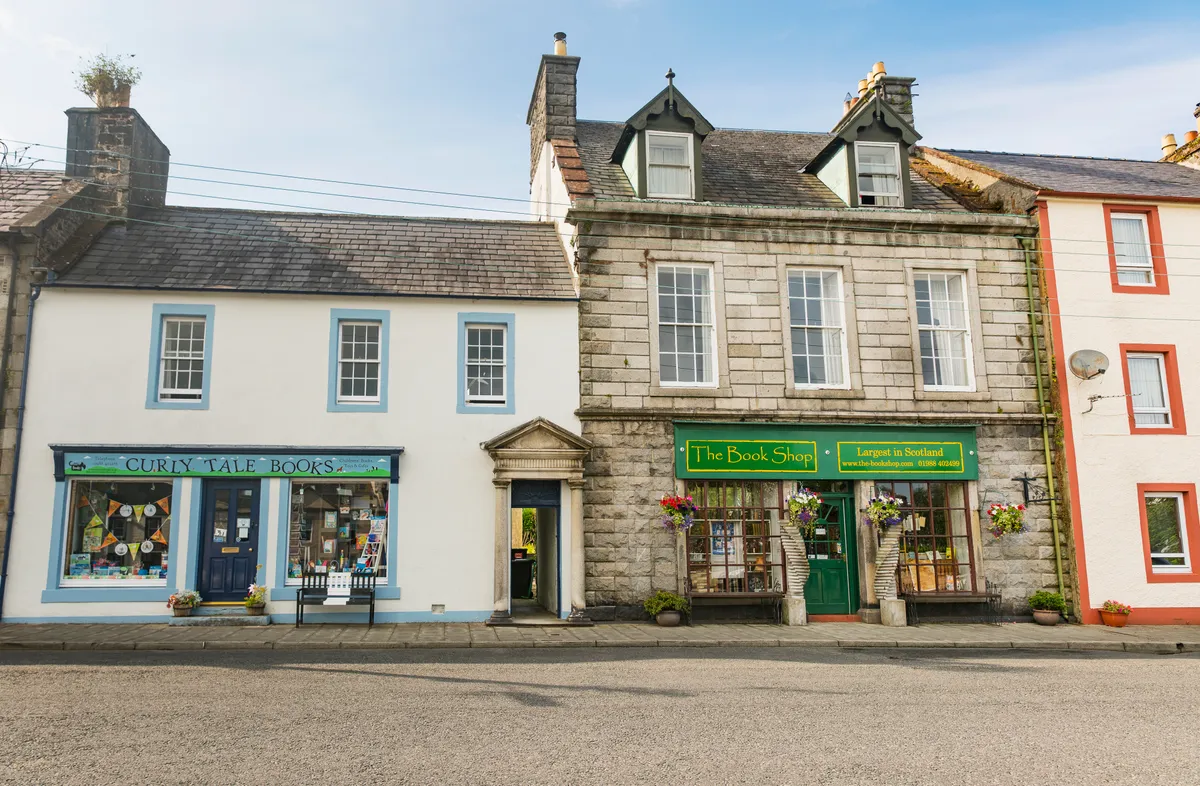
Wigtown is also full of quirky architectural interest and has a terrific selection of cosy places for sitting down and feasting over your haul of literary gems. Try the family-run Café Rendezvous for tasty home cooking using local ingredients, or the women's bookshop ReadingLasses which comes with its own coffee-and-cake emporium attached.
The Wigtown Book Festival consistently draws big-name authors. It runs this year from 23rd September to 3rd October and there's plenty of local accommodation on offer from cottages to cabins. A bus from Dumfries station will take you through the countryside to Newton Stewart from where it's just a short bus-ride south to Wigtown.
Dumfries itself is a real hotbed of Scottish literature. J.M. Barrie moved to the town as a teenager in 1873 and his joyful experiences at Moat Brae house would leave their mark on generations of children around the world. Barrie and his friends made up countless pirate games in Moat Brae's gardens. He called them 'the enchanted lands' and they gave him the inspiration to write Peter Pan.
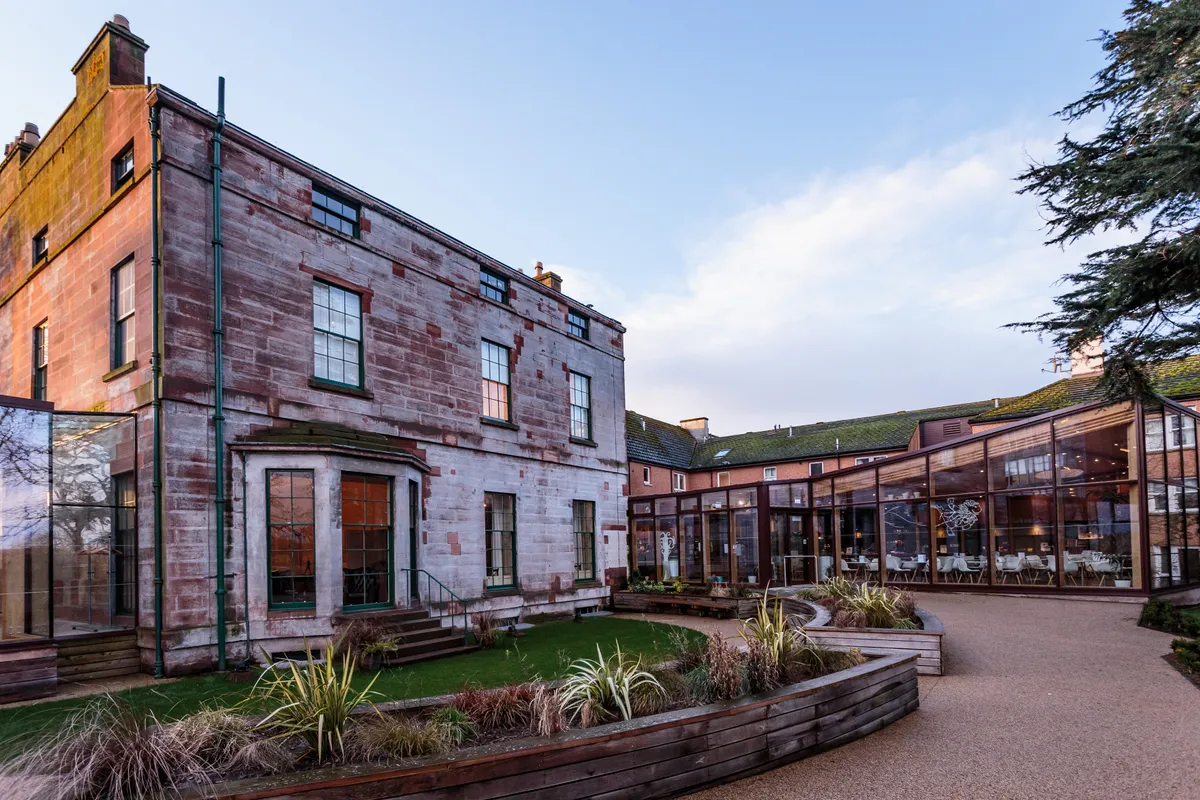
Thanks to ten years of work by a group of dedicated volunteers, Moat Brae house and gardens is open once more, bringing to new generations the story of the boy who never grew up. Located close to the broad River Nith, the Georgian townhouse is filled with fun ways for children to explore Peter Pan's world. Treasure trails, games and secrets uncovered by the flash of a torch immerse visitors in Peter and Wendy's story. The garden that so inspired its author is filled with natural wonders, but you might also want to keep a keen look out for a sleeping crocodile and a pirate ship.
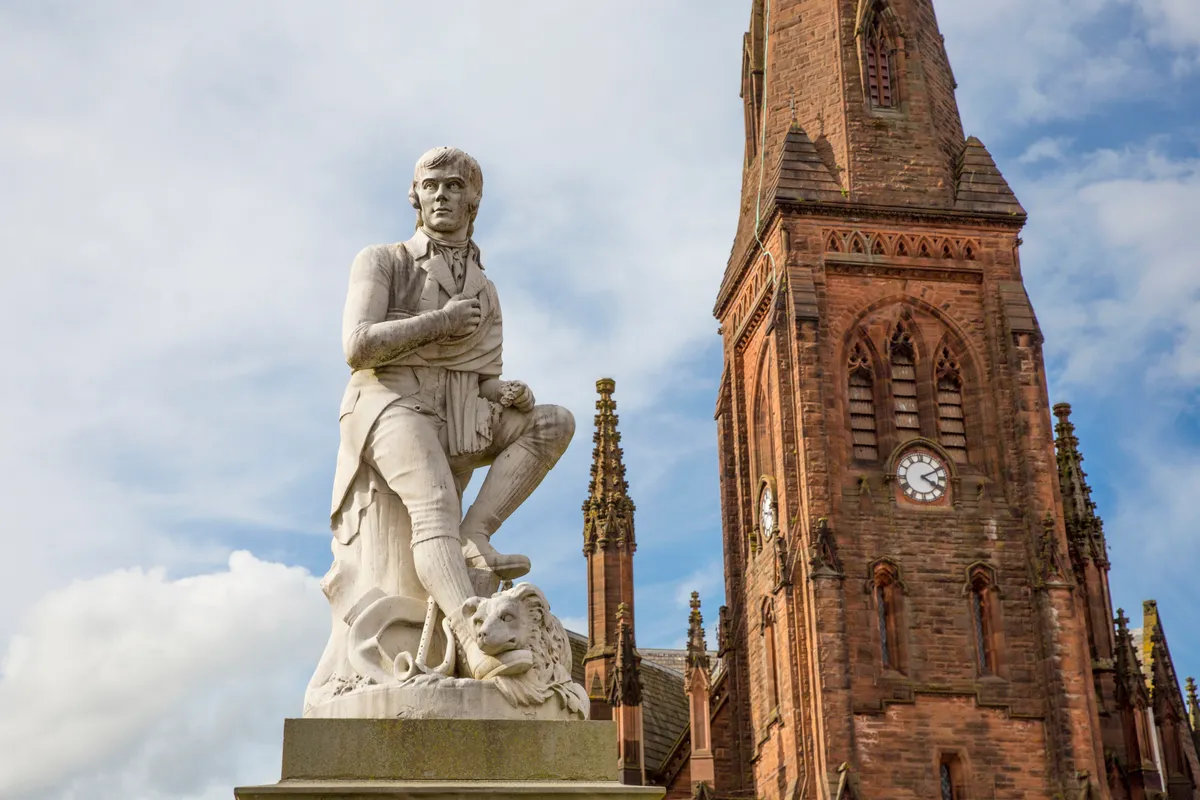
Dumfries is also the town of Robert Burns. The National Bard is a towering figure in Scottish history. Long since an integral part of the national identity – complete with his own feast night (25th January) to celebrate his birthday – the poet's work is known throughout the world, from A Red, Red Rose to Auld Lang Syne. He spent the last eight years of his short life in Dumfries-shire, and a tour of prime Robert Burns locations is a delight for poetry lovers.
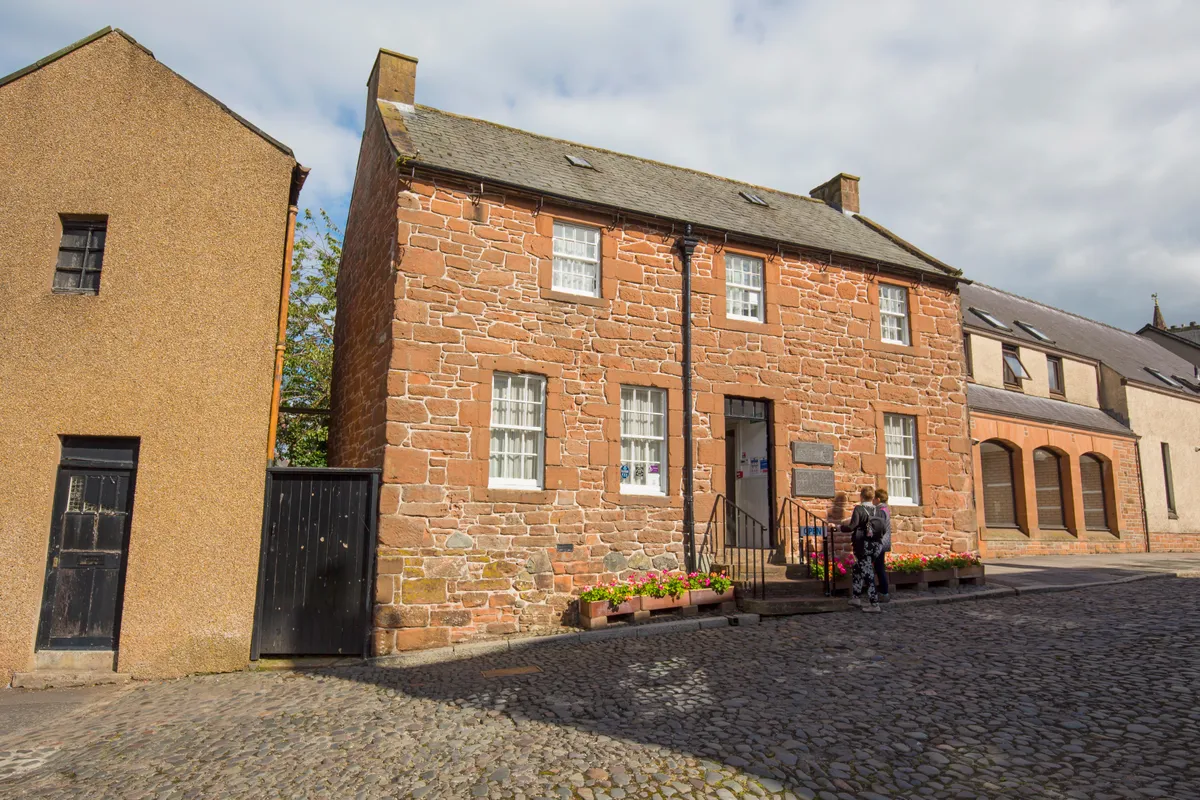
Begin at Ellisland Farm, on the River Nith about six miles from Dumfries, where Burns built a house for his family. It's now a fascinating museum containing an almost unrivalled collection of the bard's treasures at the farm he called 'the poet's choice'.
A walk around Dumfries should start at the poet's statue in Church Place. The Robert Burns House – on Burns Street, of course – is a surprisingly humble sandstone home where the poet lived and died, and is decorated and furnished just as he would have known it. Nearby, you'll find the neo-classical Burns Mausoleum, the Ploughman Poet's last resting place.
Afterwards, have an indulgent bite to eat and raise a wee dram at Burns' favourite pub, The Globe Inn, where there are over 300 whiskies to choose from. Or perhaps head for The Usual Place, an award-winning, innovative and wheelchair-friendly community café in a former church.
Trains run direct from Glasgow to Dumfries, giving passengers a chance to enjoy nearly two hours of sumptuous lowland landscapes.
Responsible tourism
Responsible travel and tourism is essential when visiting sites of historic or environmental importance, so that the sites are protected for future generations to enjoy.
Simple things you can do to be a responsible tourist:
- Travel in an eco-friendly way – either walking, cycling or using public transport to visit sites if you can.
- Don't climb or walk on historic sites or tamper with the ruin or building.
- Make sure you take any litter home. Litter can harm wildlife and the local eco-system.
For more practical advice on responsible tourism, visit: visitscotland.com/about/responsible-tourism
Scottish Borders
This year marks the 250th anniversary of the birth of another Scottish literary giant: Sir Walter Scott who lived and was inspired by the dramatic scenery of the Scottish Borders. The celebrations promise to be absorbing, enlightening and fun.
Not only was Scott a wildly successful author – his books breaking numerous sales records – but his historical novels also helped shape the Scottish nation and its idea of itself. He also found time to bring tartan back into fashion, unearth Scotland's long disappeared crown jewels, and save the Scottish banknote. The programme of special events in 2021 and 2022 includes talks by Scott experts; film showings; a festive day out; and even a race meeting of Dandie Dinmont terriers.
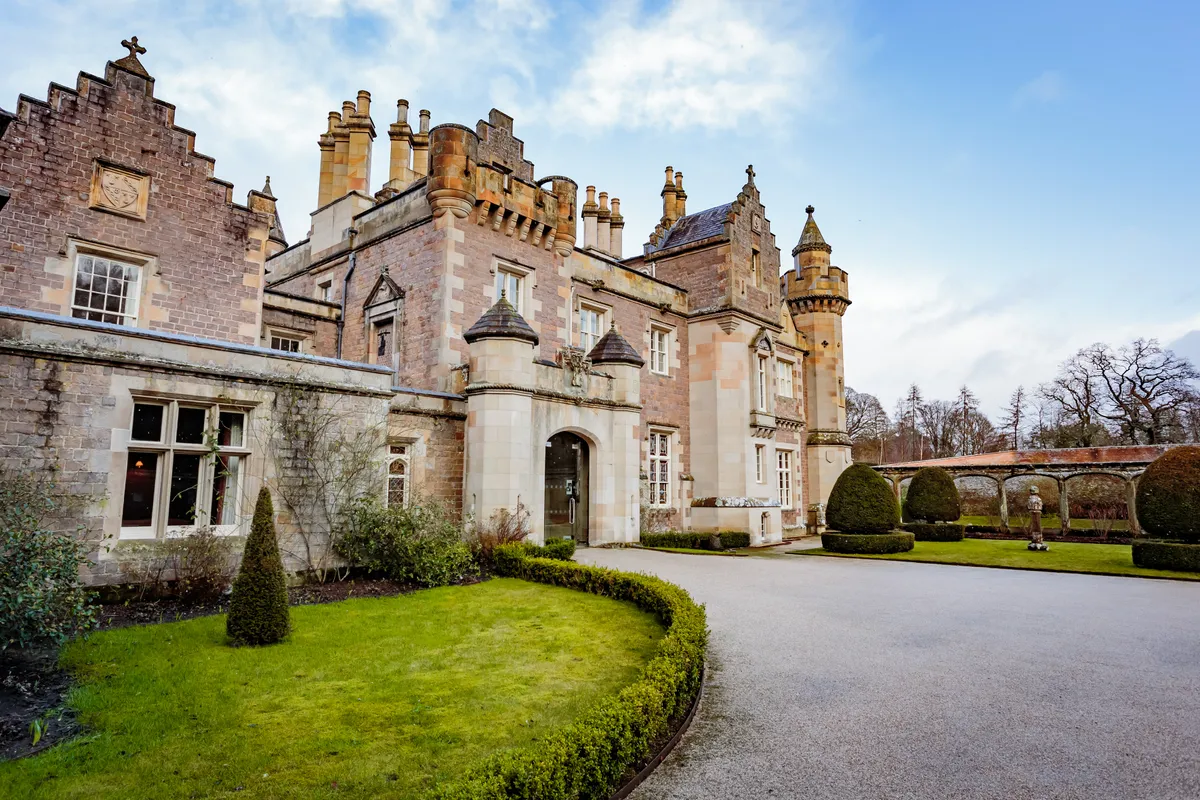
Several of Scott's novels are set in the Scottish Borders, including The Monastery and Saint Ronan's Well. So, what better way to honour the great man than to pay a visit to Abbotsford, the remarkable home he created in the county? The Scottish Baronial mansion sits in a glorious 120-acre estate on the River Tweed and is full of the fascinating artefacts Scott collected. Here you can delve into the life of the novelist, enjoy a meal prepared with local ingredients in the café, and walk in Scott's footsteps by taking a leisurely stroll in the formal gardens and wilder woodlands.
To get to Abbotsford, simply board a train on the Borders Railway to Tweedbank from Edinburgh Waverley (named after Scott's famous series of novels) and follow the signposted 'Abbotsford Link' path for about a mile (there's a bus if you'd rather ride). Alternatively, if you like a hike, simply arrive on the waymarked Borders Abbeys Way which runs right past the visitor centre.
J. K. Rowling famously wrote the mega-hit Harry Potter series in the Scottish capital, but it's less well known that she took inspiration for the books' Forbidden Forest from one of her many visits to the Scottish Borders. The mighty wood that borders Hogwarts school is based on Glentress Forest near Peebles.
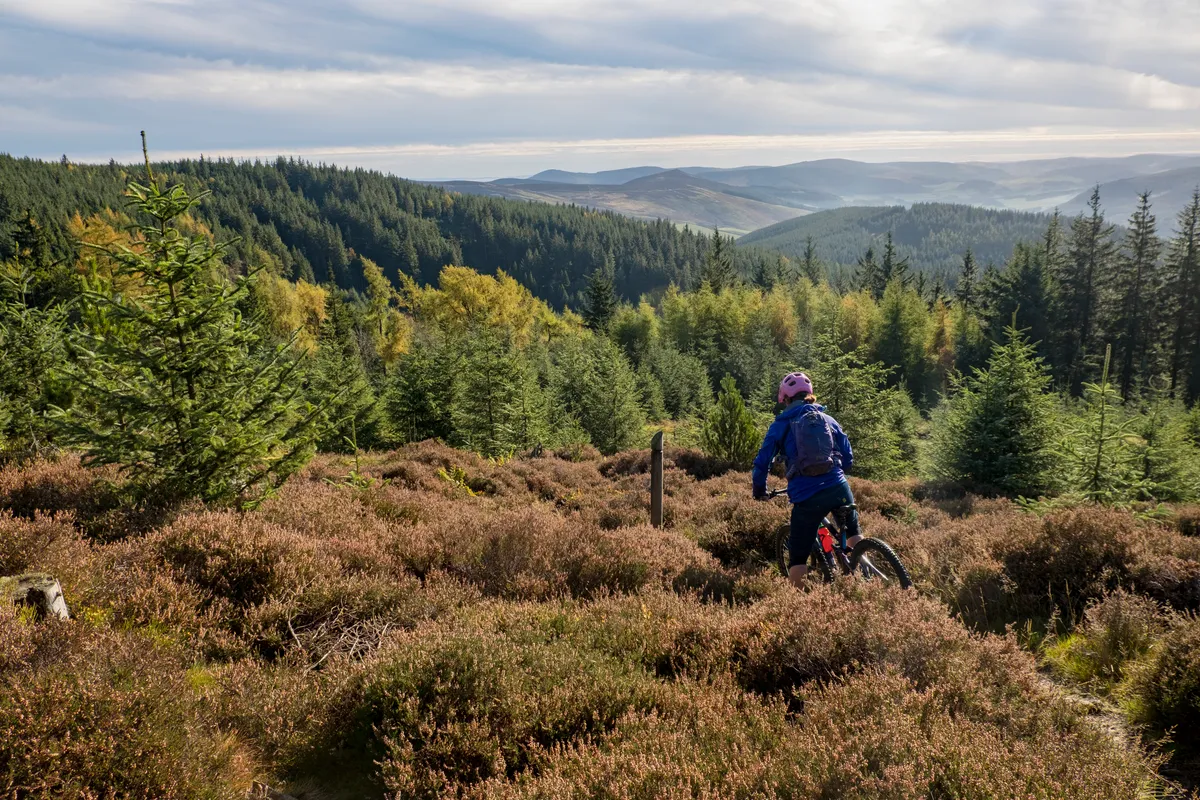
Planted in the 1920s to replace timber used up in World War I, Glentress is part of the Tweed Valley Forest Park and contains some of the best mountain biking trails in Britain. There are five routes ranging from just over two miles to an epic 18-miler, providing challenges for every rider from novice to expert.
Walkers are not forgotten either. Five waymarked trails explore different features of the forest – look out for herons, bats and red squirrels as you follow the Ponds Trail, or climb the Time Trail up to an Iron Age hill fort for spectacular views of the Tweed Valley.
Thankfully, there's a café where you can take a breather and refuel. And if you yearn to head up to the forest canopy, Go Ape will supply you with a tree-top adventure to remember. A direct bus runs from Edinburgh to Glentress and bikes can be hired from the forest's own shop.
But those who prefer their thrills sitting down should ink 15th-19th September in their diaries. That's when the Borders Book Festival will be taking place in the Harmony Garden, Melrose. One of Britain's finest literary festivals is raring to go live again, bringing authors, poets and playwrights back together with audiences.
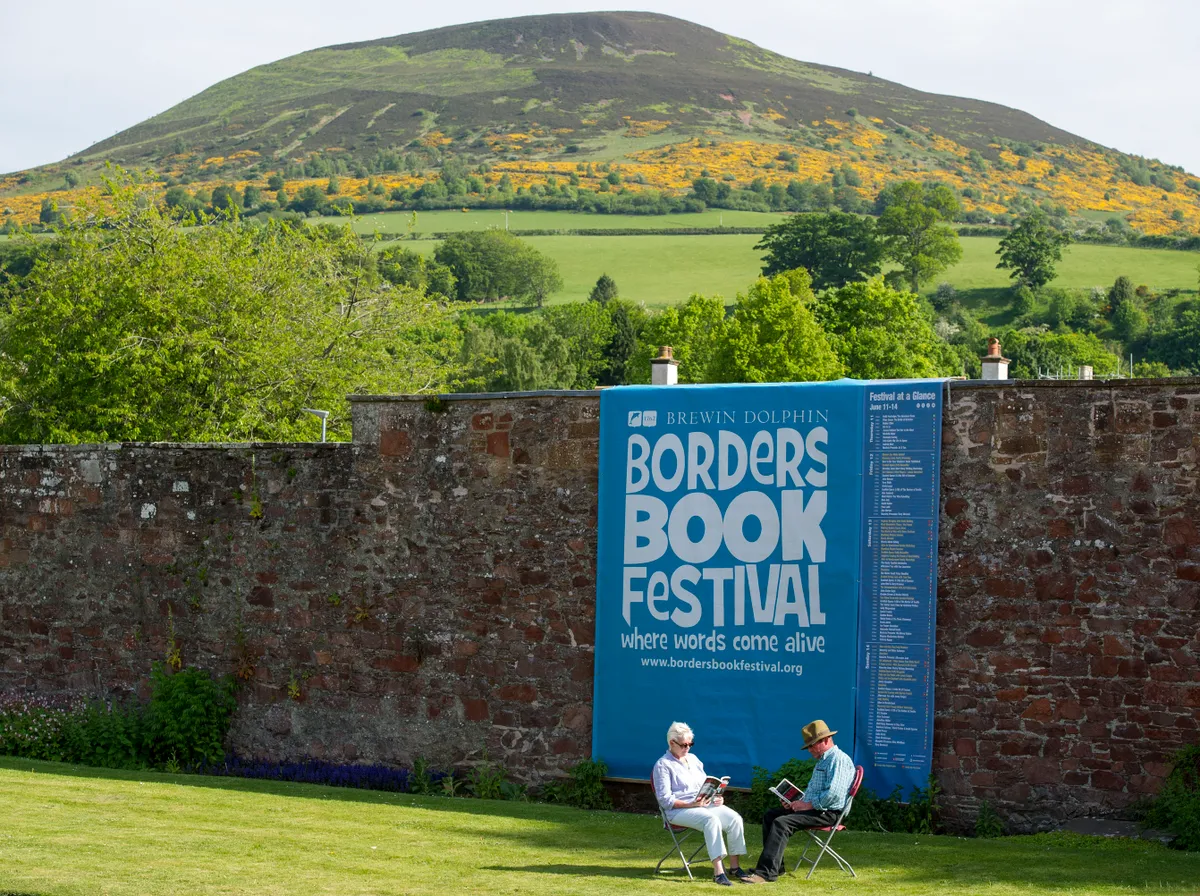
Launched in 2004 as a small bookish gathering, the festival now draws in nearly 35,000 word lovers and some of the biggest talents in contemporary writing. The festival village includes an impressive event marquee, storytelling tent, bar, and even a crème brûlée van (and much else besides).
Melrose, with its famous abbey, is one of Scottish Borders' most alluring towns, and the National Trust for Scotland's Harmony Garden, with its scented borders and beautifully manicured lawns, makes a charming setting for the festival.
Travel there by train on the Borders Railway from Edinburgh to Tweedbank, from where it's a 1.5-mile walk, cycle or bus ride to Harmony Garden. A direct bus service also runs from Edinburgh and Melrose.
For more information on visiting the South of Scotland, see: visitscotland.com/seesouthscotland
Please check the latest government guidelines before travelling:visitscotland.com/about/practical-information/covid-19-recovery-phases/

